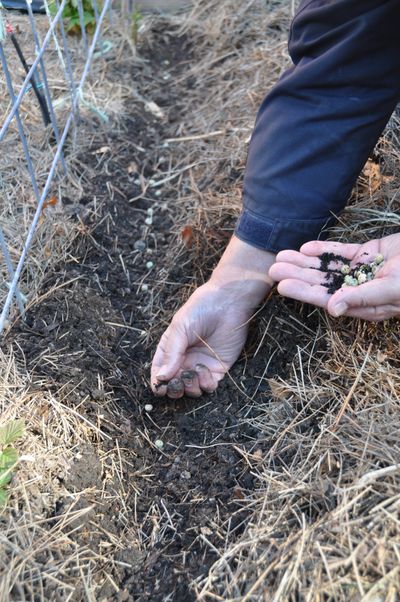Gardening: Inoculant boosts legumes’ ability to pull nitrogen into soil

The cool weather of early spring is the perfect time to plant peas.
They love the cool temperatures and have plenty of time to set fruit before the hot weather wilts them. As simple as this seems, they can sometimes be hard to germinate even when the garden is in perfect condition.
Peas, as well as beans, sweet peas and fava beans, are all members of the legume family. With the help of a common soil bacteria, this unique plant family can pull nitrogen out of the air and convert it to a form that can be absorbed by the plants. They basically create their own fertilizer. While the bacteria are common, it sometimes helps to boost its availability to start the crop off right.
The bacteria, called rhizobacteria, create a symbiotic relationship with the roots of the legumes and cause the roots to grow small nodules on their root fibers. The bacteria draw carbohydrates from the plant and in exchange draw in atmospheric nitrogen and split it into a form the plants can use. Nitrogen makes up 78% of the air we breathe. Over the growing season, these bacteria can create hundreds of pounds of plant nitrogen per acre of legume crop. That is no insignificant amount when you put it into terms of your pea patch.
The bacteria, called an inoculant, are commonly sold at local garden centers incorporated into a pellet of peat to make it easy to spread.
When it’s time to plant, the inoculant is mixed into a slurry with a little water in a bowl and the seeds are coated with the mix and planted. The dry pellets can also be spread on the seed after they have been set in the row, but the coverage might not be as complete.
The bacteria do have a shelf life, so it’s best to buy fresh inoculant each spring. It can be stored in a cool, dry place for use on bean crops that are planted later in the season.
Another soil additive that is sometimes useful in a garden or landscape is elemental sulfur, especially for acid-loving plants. Plants like rhododendrons, blueberries, hollies, hydrangeas, bleeding hearts, heather, daffodils and marigolds do better with a soil pH of 5 to 6. The soils in our region tend to be in the 6 to 7 pH range. The sulfur slowly breaks down into its sulfate form which then lowers the soil pH.
The best time to apply sulfur is in the fall every other year to give it time to start breaking down over the winter. It usually is sold at garden centers as granules that are scattered on the surface of the soil for existing plantings or incorporated into the soil at planting time. The recommended application rate is about a half a cup of sulfur per plant.
Given our below-zero cold snap with no snow cover in January, what plants did you lose to the cold? Roses took a beating. What else?